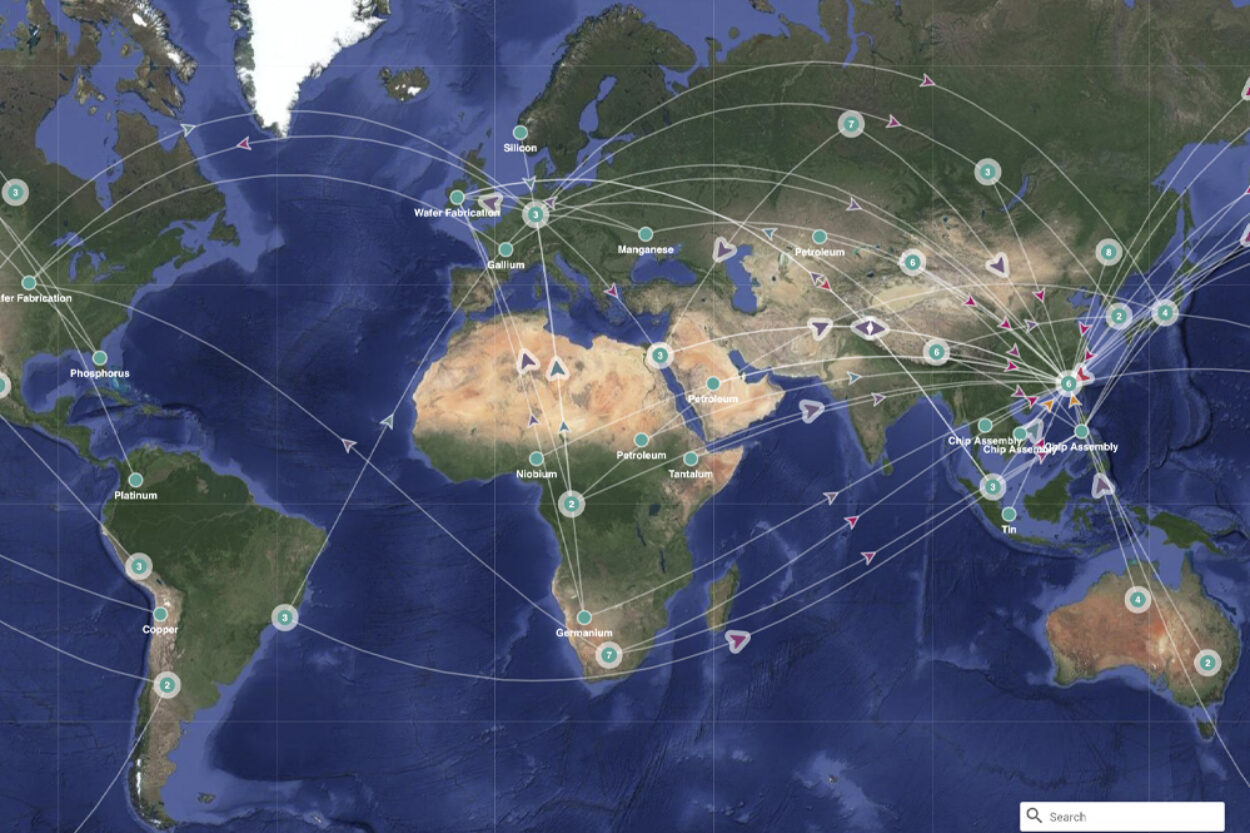For years, companies have managed their extended supply chains with intermittent audits and certifications while attempting to persuade their suppliers to adhere to certain standards and codes of conduct. But they’ve lacked the concrete data necessary to prove their supply chains were working as they should. They most likely had baseline data about their suppliers — what they bought and who they bought it from — but knew little else about the rest of the supply chain.
With Sourcemap, companies can now trace their supply chains from raw material to finished good with certainty, keeping track of the mines and farms that produce the commodities they rely on to take their goods to market. This unprecedented level of transparency provides Sourcemap’s customers with the assurance that the entire end-to-end supply chain operates within their standards while living up to social and environmental targets.
And they’re doing it at scale for large multinationals across the food, agricultural, automotive, tech, and apparel industries. Thanks to Sourcemap founder and CEO Leonardo Bonanni MA ’03, SM ’05, PhD ’10, companies like VF Corporation, owner of brands like Timberland, The North Face, Mars, Hershey, and Ferrero, now have enough data to confidently tell the story of how they’re sourcing their raw materials.
“Coming from the Media Lab, we recognized early on the power of the cloud, the power of social networking-type databases and smartphone diffusion around the world,” says Bonanni of his company’s MIT roots. Rather than providing intermittent glances at the supply chain via an auditor, Sourcemap collects data continuously, in real-time, every step of the way, flagging anything that could indicate counterfeiting, adulteration, fraud, waste, or abuse.
“We’ve taken our customers from a situation where they had very little control to a world where they have direct visibility over their entire global operations, even allowing them to see ahead of time — before a container reaches the port — whether there is any indication that there might be something wrong with it,” says Bonanni.
The key problem Sourcemap addresses is a lack of data in companies’ supply chain management databases. According to Bonanni, most Sourcemap customers have invested millions of dollars in enterprise resource planning (ERP) databases, which provide information about internal operations and direct suppliers, but fall short when it comes to global operations, where their secondary and tertiary suppliers operate. Built on relational databases, ERP systems have been around for more than 40 years and work well for simple, static data structures. But they aren’t agile enough to handle big data and rapidly evolving, complex data structures
Sourcemap, on the other hand, uses NoSQL (non-relational) database technology, which is more flexible, cost-efficient, and scalable. “Our platform is like a LinkedIn for the supply chain,” explains Bonanni. Customers provide information about where they buy their raw materials, the suppliers get invited to the network and provide information to validate those relationships, right down to the farms and the mines where the raw materials are extracted — which is often where the biggest risks lie.
Initially, the entire supply chain database of a Sourcemap customer might amount to a few megabytes of spreadsheets listing their purchase orders and the names of their suppliers. Sourcemap delivers terabytes of data that paint a detailed picture of the supply chain, capturing everything, right down to the moment a farmer in West Africa delivers cocoa beans to a warehouse, onto a truck heading to a port, to a factory, all the way to the finished goods.
“We’ve seen the amount of data collected grow by a factor of 1 million, which tells us that the world is finally ready for full visibility of supply chains,” says Bonanni. “The fact is that we’ve seen supply chain transparency go from a fringe concern to a broad-based requirement as a license to operate in most of Europe and North America,” says Bonanni.
These days, disruptions in supply chains, combined with price volatility and new laws requiring companies to prove that the goods they import were not made illegally (such as by causing deforestation or involving forced or child labor), means that companies are often required to know where they source their raw materials from, even if they only import the materials through an intermediary.
Sourcemap uses its full suite of tools to walk customers through a step-by-step process that maps their suppliers while measuring performance, ultimately verifying the entire supply chain and providing them with the confidence to import goods while being customs-compliant. At the end of the day, Sourcemap customers can communicate to their stakeholders and the end consumer exactly where their commodities come from while ensuring that social, environmental, and compliance standards are met.
The company was recently named to the newest cohort of firms honored by the MIT Startup Exchange (STEX) as STEX25 startups. Bonanni is quick to point out the benefits of STEX and of MIT’s Industrial Liaison Program (ILP): “Our best feedback and our most constructive relationships have been with companies that sponsored our research early on at the Media Lab and ILP,” he says. “The innovative exchange of ideas inherent in the MIT startup ecosystem has helped to build up Sourcemap as a company and to grow supply chain transparency as a future-facing technology that more and more companies are now scrambling to adopt.”
